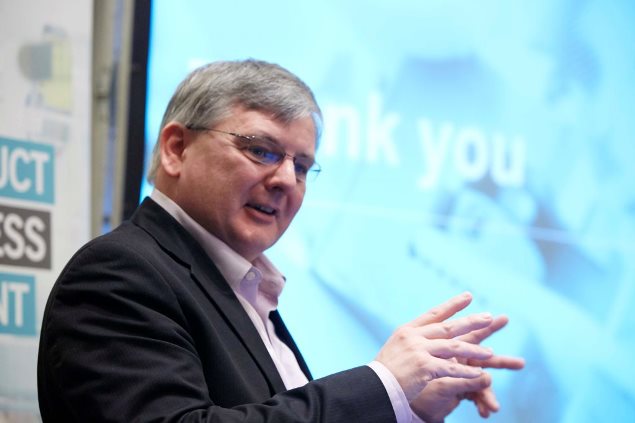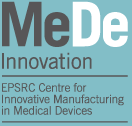Managing expectations, discovering new applications and developing new technology – an interview with Professor Kenny Dalgarno

June 14, 2017
In this interview with 3DMedNet, Kenny Dalgarno, MeDe Innovation Theme 2A and 2B from Newcastle University (UK), discusses his work with Arthritis Research UK (Chesterfield, UK), the development of a revolutionary method of 3D bioprinting and the road ahead to commercializing 3D printing and bioprinting.
Professor Kenny Dalgarno
Kenny Dalgarno is Sir James Woodeson Professor of Manufacturing Engineering at Newcastle University, Deputy Director of the Arthritis Research UK Tissue Engineering Centre, Deputy Director of the EPSRC Centre for Innovative Manufacture in Medical Devices and coordinator of the FP7 RESTORATION project. Kenny is also the Newcastle University lead investigator for the EPSRC Centre for Doctoral Training in Additive Manufacture and 3D Printing. For the past decade he has been researching in the area of additive manufacture, with applications in rapid prototyping and manufacturing, polymer engineering, and with an increasing emphasis on applications in biomedical engineering, tissue engineering and regenerative medicine, with work supported by the EPSRC, the European Commission, Arthritis Research UK, the Carbon Trust, and industry.
Please introduce yourself and your institution?
I am Professor of Manufacturing Engineering and for the last 15–20 years I’ve been working on 3D printing and additive manufacturing. For most of the last 10 years, that’s been mostly directed at biomedical applications, which I came onto accidentally. It turned out the processes I was most interested in turned out to have the most application in that area! I’m also deputy director of the Arthritis Research UK Tissue Engineering Centre (Cambridge, UK) and deputy director of the EPSRC Centre for Innovative Manufacture in Medical Devices (Leeds, UK).
What we are working on is making implants–bioactive implants for the most part–in polymers, bioceramics and composites of the two. For the last 4–5 years we have worked on printing cells and other biomolecules. That grew out of our musculoskeletal interests – we wanted to print cells and biomaterials together, to make cell laden structures, but we found that this quite difficult so we had to develop strategies for that.
We have a group across the university consisting of about 20 researchers, from professors to research students, who are interested in using additive manufacturing, bioprinting and biofabrication techniques for medical devices and regenerative medicine. A lot of this research remains musculoskeletal, but more recently we’ve started to get involved in developing technique directed at printing skin, pancreas tissues for diabetes, cancer cocultures as ways of testing drugs or prescribing personalized drugs and developing microfluidic structures.
What are the drawbacks with 3D printing techniques?
The existing issues are with salability. 3D printing techniques are not necessarily quick and not necessarily reliable; the ones that are reliable tend to be slow and the ones that are quick tend to be unreliable. Therefore, they’re not fully mature industrial processes. I think that’s true of additive manufacturing in general, for the most part, and is also true of the biofabrication processes. In a technology sense, they’re still emerging, and will be bettered…
To read the full interview, visit the 3DMedNet website
- July 2019
- February 2019
- December 2018
- November 2018
- October 2018
- August 2018
- July 2018
- June 2018
- May 2018
- April 2018
- March 2018
- February 2018
- January 2018
- December 2017
- November 2017
- October 2017
- September 2017
- August 2017
- June 2017
- May 2017
- March 2017
- February 2017
- January 2017
- November 2016
- October 2016
- September 2016
- July 2016
- June 2016
- May 2016
- April 2016
- March 2016
- February 2016
- January 2016
- December 2015
- November 2015
- September 2015
- July 2015
- June 2015
- May 2015
- April 2015
- March 2015
- February 2015
- January 2015
- December 2014
- November 2014
- October 2014
- September 2014
- August 2014
- July 2014
- June 2014
- April 2014
- March 2014
- February 2014
- January 2014
- December 2013
- October 2013
- September 2013
- February 2013
